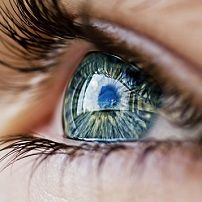Article
End-Stage Renal Disease Elevates Risk of Macular Degeneration
Author(s):
Age-related macular degeneration (AMD) was 72% more likely to develop in end-stage renal disease patients than in control subjects and 74% more likely to develop in peritoneal dialysis patients than in hemodialysis patients.

A Taiwanese team of investigators used a large health insurance database to determine the risk of age-related macular degeneration (AMD) in patients with end-stage renal disease (ESRD) who were receiving long-term dialysis. They also used propensity-score matching methods to compare peritoneal dialysis patients with hemodialysis patients regarding their risk of AMD. Results of the study were published in the October, 2016, issue of Retina.
The researchers used the National Health Insurance Research Database of Taiwan to identify 27,232 patients with newly diagnosed ESRD from 2000 to 2010. They then randomly selected 108,928 control subjects without kidney disease and matched them to the ESRD patients with regard to age, sex, and index year. Of these, 9,287 (34%) were receiving peritoneal dialysis, and 17,945 (66%) were receiving hemodialysis.
Furthermore, they identified a group of hemodialysis patients and used propensity scores to match them with peritoneal dialysis patients. Each of these groups included 9,256 patients. All groups received follow-up measurement of AMD incidence until the end of 2011.
As a result, they found the following AMD incidences:
- Control group: 1.84 per 1,000 person-years
- ESRD group: 4.03 per 1,000 person-years
- Peritoneal dialysis group: 5.37 per 1,000 person-years
- Hemodialysis group: 3.50 per 1,000 person-years
In addition, they found the following hazard ratios for AMD for each group compared with the control group:
- ESRD group: 1.72 (95% confidence interval [CI], 1.50—1.97)
- Peritoneal dialysis group: 2.47 (95% CI, 2.05—2.98)
- Hemodialysis group: 1.43 (95% CI, 1.22—1.68)
They also determined that hazard ratio for AMD of peritoneal dialysis patients compared with propensity-score-matched hemodialysis patients was 1.74 (CI, 1.27—2.38).
These findings prompted the researchers to conclude that ESRD patients may be at higher risk of AMD than those without kidney disease. They also concluded that peritoneal dialysis patients may be at higher risk of AMD than hemodialysis patients.
Related Coverage:
Seeking Solutions for DME Patients Who Respond Poorly to Anti-VEGF Agents
In Neovascular Age-Related Macular Degeneration, Lucentis and Eylea Yield Similar Injection Burden





